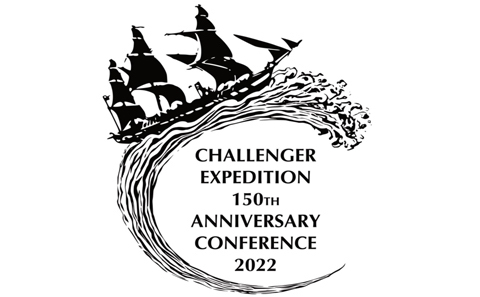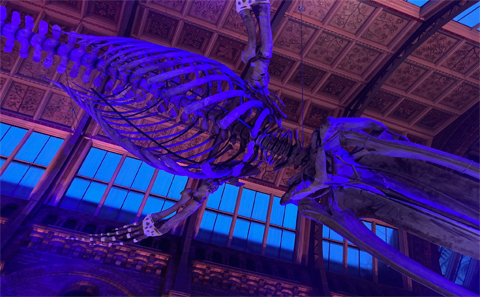Celebrating HMS Challenger and 150 years of marine geology and oceanography

Hundreds of marine scientists of all flavours gathered in South Kensington, London, in early September at the Royal Geographic Society and Natural History Museum to celebrate the 150th Anniversary of the voyages of discovery of HMS Challenger – arguably the birth of oceanography.
The ship’s name Challenger is synonymous with exploration and discovery and was also adopted by the Glomar Challenger that undertook the first heroic experiments in scientific ocean drilling from the late 1960s during the Deep Sea Drilling Project (DSDP) as well as the Royal Research Ship RRS Challenger (1973 to 2000).
Manganese nodules recovered from abyssal depths in the oceans are perhaps the most iconic discoveries from the voyages of HMS Challenger and these nodules and other manganiferous encrustations gave early hints of deep mineral wealth in the oceans. Through combinations of oceanographic exploration, marine geophysics and scientific ocean drilling we now have a comprehensive view of the different environments where important styles of metal deposits are formed in the oceans by hydrothermal systems or precipitation from seawater. Some of these deposits include strategic metals (Cu, Ni, Co, Ta) that are sought after commodities for the green technologies essential to decarbonise modern society. However, these deposits have developed in some of the most pristine and fragile environments remaining on our planet. SMMI Director Damon Teagle, together with Challenger 150 Co-chair Richard Herrington and Rachel Mills (KCL) convened a session about the potential challenges and reality of deep-sea mining of seabed resources. Speakers in this session included researchers and experts from the International Seabed Authority, potential seabed miners such as TMC as well as expert researchers interested in understanding active seabed deposit.

Professor Andrew Serdy from the Institute of Maritime Law was sponsored by the SMMI to discuss “The common heritage regime for deep seabed minerals” and challenge progress on the frameworks being put in place by the International Seabed Authority. Professor Steve Roberts (SOES) gave a history of the profound findings yielded by scientific ocean drilling into the geometry and time scales of ore-forming events, fluid sources and subsurface mineralisation processes that can’t be established from fluid sampling alone or from ancient on-land ore-deposits. In a paired session Professor Jon Copley (SOES) discussed the ecological context of seafloor sulphide deposits formed at deep sea hydrothermal vents and the knowledge gaps related to these unique environments and communities. Numerous other Southampton colleagues presented talks and posters.
